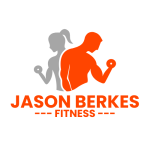Strength training is a transformative journey, empowering individuals to unlock their full potential. To optimize progress and minimize plateaus, incorporating strategic progressions and regressions into your training routine is essential. In this comprehensive guide, we’ll delve into the world of strength training, exploring the principles, benefits and practical applications of progressions and regressions.
Understanding Progressions and Regressions
Progressions and regressions are modifications to exercises that:
- Increase or Decrease Difficulty: Gradually challenge or ease movements.
- Enhance Specificity: Target specific muscle groups or movement patterns.
- Promote Progressive Overload: Incrementally increase intensity.
Benefits of Progressions and Regressions
- Injury Prevention: Regressions accommodate limitations, while progressions prevent plateaus.
- Improved Adaptation: Gradual changes stimulate continuous growth.
- Enhanced Transfer of Strength: Specificity promotes functional strength.
- Increased Motivation: Varied exercises maintain engagement.
Principles of Effective Progressions
- Start with Basics: Master fundamental movements before progressing.
- Gradual Incrementation: Small, incremental changes.
- Focus on Control: Maintain control throughout exercises.
- Multi-Planar Movements: Incorporate movements in multiple planes.
Principles of Effective Regressions
- Identify Limitations: Recognize individual constraints.
- Modify, Don’t Compromise: Adjust exercises without sacrificing form.
- Focus on Control: Maintain control throughout regressions.
- Build Foundations: Strengthen weaknesses.
Progression Strategies
1. Load Progression
- Weight Increase: Gradually add weight.
- Resistance Bands: Incorporate bands for variable resistance.
- Isometric Holds: Increase hold duration.
2. Volume Progression
- Increased Repetitions: Gradually increase reps.
- Additional Sets: Add sets for enhanced endurance.
- Decreased Rest Time: Shorten rest periods.
3. Complexity Progression
- Multi-Joint Exercises: Combine movements (e.g., squats to lunges).
- Unstable Surfaces: Incorporate balance challenges.
- Plyometric Training: Add explosive movements.
Regression Strategies
1. Range of Motion Reduction
- Shortened Range: Decrease movement amplitude.
- Partial Reps: Focus on specific phases.
- Isometric Holds: Replace dynamic movements.
2. Support and Assistance
- Resistance Band Assistance: Aid movements.
- Partner Assistance: Provide external support.
- Machine-Based Exercises: Use guided equipment.
3. Reduced Intensity
- Lighter Weights: Decrease load.
- Slower Tempos: Increase movement duration.
- Bodyweight Modifications: Adjust body position.
Exercise-Specific Progressions and Regressions
- Squats: Progress from bodyweight to weighted, regress to quarter squats.
- Push-Ups: Progress to diamond push-ups, regress to knee push-ups.
- Lunges: Progress to walking lunges, regress to stationary lunges.
- Rows: Progress to pull-ups, regress to assisted rows.
Common Mistakes to Avoid
- Ignoring Progressive Overload: Failing to challenge muscles.
- Neglecting Regressions: Overlooking limitations.
- Inconsistent Training: Irregular schedules.
Conclusion
Embracing strategic progressions and regressions revolutionizes strength training. By incorporating these principles, you’ll:
- Enhance Adaptation: Continuously challenge muscles.
- Prevent Plateaus: Avoid stagnation.
- Foster Resilience: Develop mental and physical toughness.

